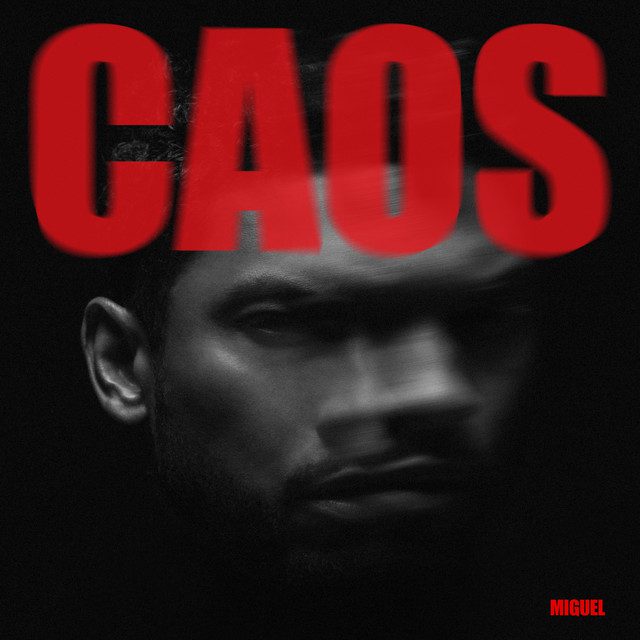Miguel has always been hard to put in a box. Sure, people tried, R&B star, alternative crooner, sex-symbol, festival-ready rock-soul hybrid. But Miguel has never sat still long enough for any single label to stick. His career has always been built on movement. Energy. Tension. Reinvention. A refusal to settle for the version of himself that people already understand. With CAOS, he didn’t just make an album, he made a psychological snapshot of an artist going through the fire, documenting the flames, and refusing to pretend it didn’t burn.
But in 2025, after nearly 15 years in the spotlight, Miguel is no longer the artist defined by the silky R&B waves of Kaleidoscope Dream or the seductive, clean-cut mystique of War & Leisure. He’s no longer chasing the “Miguel sound” that fans romanticized in the early 2010s. He isn’t trying to fit into the Spotify-polished, algorithm-friendly lane that dominates today’s R&B and pop landscape.
Miguel is one of those artists who always shows up with intention. Even when he’s experimenting, even when he’s making you uncomfortable in the best way, his music arrives with purpose and captures exactly where he’s at in life.
The crazy part is that Miguel’s chaos still sounds beautiful. Even when it’s distorted, fractured, or emotionally tense, the musicality is undeniable. He leans into industrial textures, psychedelic blends, sharp edges, and vocal moments that crack on purpose. There’s no smoothing out the rough patches. He leaves them visible because they’re part of the story.
CAOS Album Breakdown
From the first track, you know this isn’t War & Leisure Miguel. This isn’t Kaleidoscope Dream Miguel. This is a version of him who’s shedding skin, fighting off expectations, and walking into the studio with nothing left to hide. You don’t hear a polished performer trying to recapture a moment, you hear a human being working through the noise in real time.
There’s a lot of emotional friction across the project. The production swells and collapses around him like he’s surfing through his own internal storm. Some parts feel like late-night self-reflection; some feel like a confession he never planned to record; others feel like he’s daring the listener to sit with the discomfort instead of fast-forwarding to the pretty parts. But that’s what makes the album so compelling, the beauty comes from the tension, not in spite of it.
What Miguel does so well on CAOS is merge vulnerability with power. He still hits those signature melodic pockets, still delivers lines that cut into you with precision, but he also lets the imperfections stay in the room. He chooses honesty over polish, truth over aesthetic. If you’ve ever gone through a moment where your personal life, identity, career, and emotions all collided at once, this album feels like the soundtrack to that experience.
There are moments on the album where Miguel’s voice feels like the center of gravity, everything bends around it. Then there are moments where the production swallows him whole and he lets it happen. That push and pull is the heart of CAOS. He’s not trying to be the hero of every record. He’s trying to be present inside the emotion, even when the emotion isn’t flattering.
Sonically, the album jumps between worlds without ever losing its core. There are heavier tracks that almost feel like R&B dipped in metal or alt-rock energy, then suddenly he’ll drift into something intimate and stripped to the bone. Instead of feeling scattered, the whole thing plays like late-night thoughts when you can’t sleep — everything rushing in at once, everything connected by the state of mind you’re in.
That’s the quiet genius of CAOS: the album doesn’t sound like it was designed for playlists or algorithmic comfort. It sounds like Miguel made the exact project he needed to make right now, without compromise, without chasing nostalgia, and without worrying about whether people wanted something easier.
And that’s why it hits.
From a culture perspective, Miguel is planting a flag at a time when a lot of artists are afraid to take risks.
Everyone is optimizing their sound, sharpening everything into the “perfect” version of themselves, feeding the platforms instead of feeding the art. Miguel went the opposite direction, he tore down the clean lines and rebuilt from raw emotion. You don’t hear many mainstream-adjacent artists doing that at this level.
The album stands out because it’s uncomfortable. It’s confident. It’s unpredictable. It feels like the inside of a transition, the moment when you haven’t quite landed but you’re not who you used to be anymore. A lot of fans will find themselves in that space, even if they don’t expect to.
So much of this album speaks to the experience of breaking down privately while the world expects you to stay performing publicly.
As the album moves toward the end, Miguel settles into a kind of clarity. Not a resolution, not a happy ending — but an understanding. You can feel his voice change, feel the production loosen its grip, feel the writing become more grounded. It’s like he walked into the storm and decided he wasn’t going to pretend it didn’t shape him.
CAOS is Miguel choosing truth over comfort, evolution over repetition, creative freedom over predictability. It’s not made for the casual listener looking for background vibes. It’s made for people who want to feel something real, something dented, something that still smells like smoke after the fire goes out.
If you’ve followed Miguel for years, this is the album that lets you see him clearly again, not the version curated for the spotlight, but the one rebuilding himself behind the scenes. And for anyone paying attention to R&B, alternative, and the genre-blurring lane Miguel helped create, CAOS is a reminder that great art doesn’t always come from stability.
Sometimes it comes from surviving the parts of life you hoped wouldn’t make it onto the record.
CAOS is Miguel raw, exposed, and fully in control of the storm.
Stay tuned for more updates on Miguel by signing up for the official RespectMyRegion.com newsletter.







